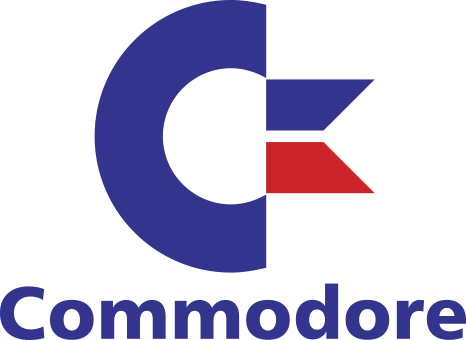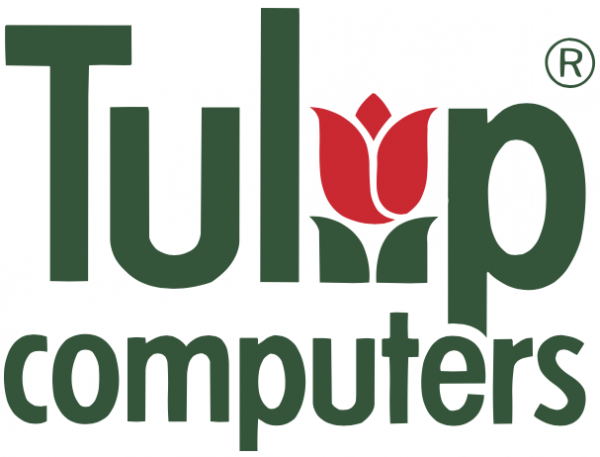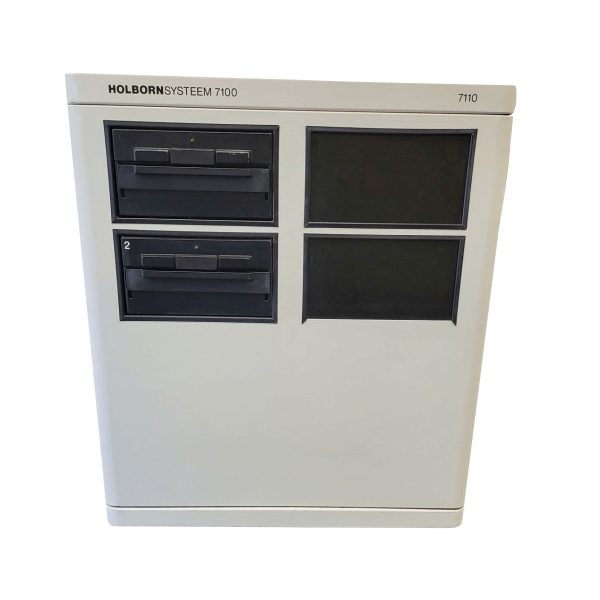The history of Holborn
Way back in September 1979, two friends, Hans Polak and Dick Gerdzen, decided to co-found a company called Holborn Computers. Their goal was quite simple: they wanted to make affordable computers, because IBM computers were quite expensive at the time.
Hans was very technically minded, but he quickly understood that building a complete computer would be too much work for one person. So he looked for help and turned to his friend Henny Bevers, who already knew a lot about computers. Henny was working at Holland Signaal at the time and had experience with Motorola microprocessors. Hans asked Henny to come and work at Holborn, and to his surprise Henny agreed.
Dick Gerdzen was the man who took care of the finances. He managed to get government funding, such as the OOM programme, to support Holborn Computers. Money is important if you want to grow a business!
At Holborn they also understood that computers had to look good, not just work well. So they hired a design firm to make sure their computers looked nice.
Holborn Computers started in a small building in Hengelo, but things went so well that they quickly needed a larger location.
This story shows how Hans Polak, Dick Gerdzen and Henny Bevers worked together to found Holborn Computers and make affordable computers available to everyone. It didn’t matter how old you were, if you wanted a computer, now was your chance to get one.
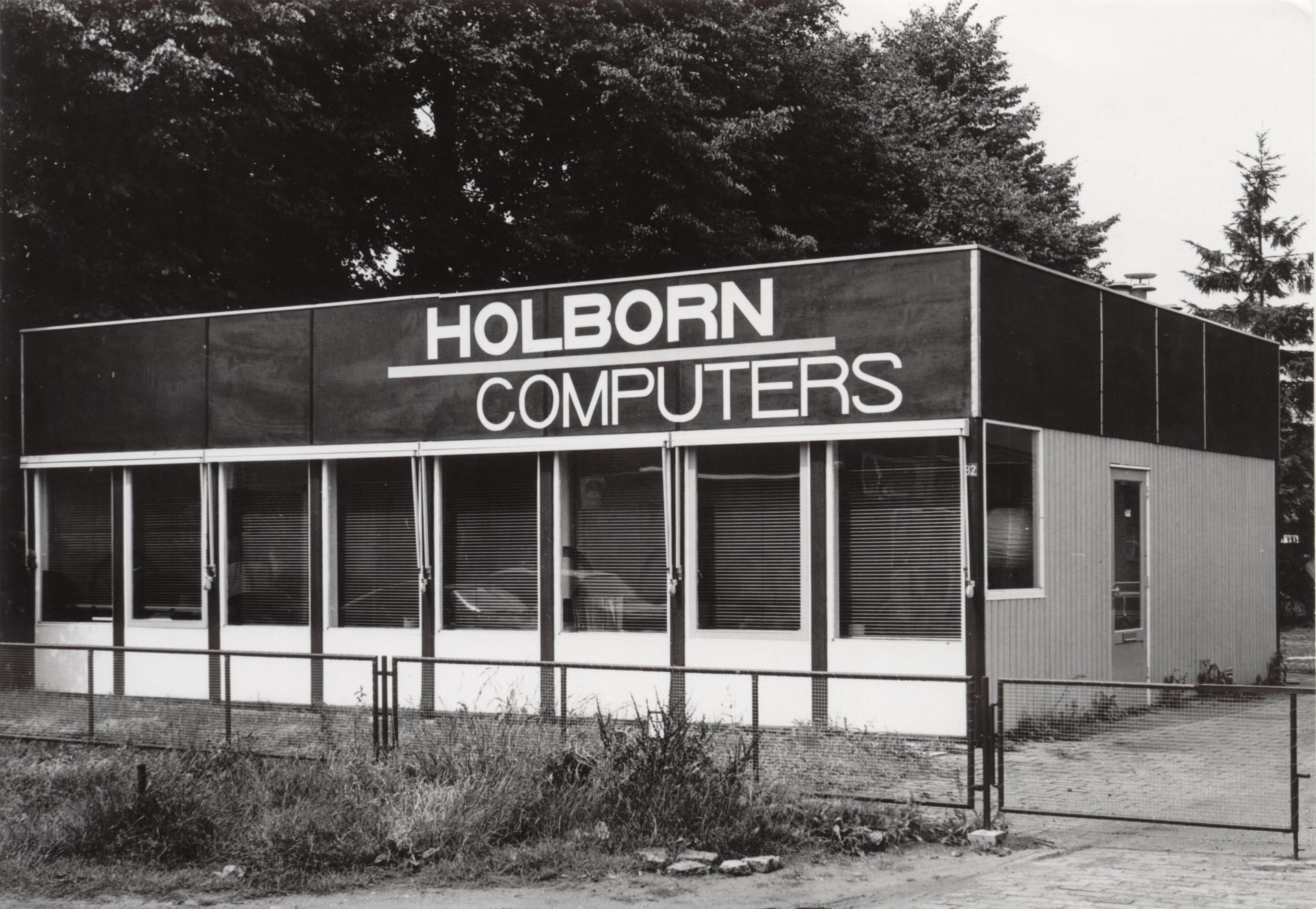
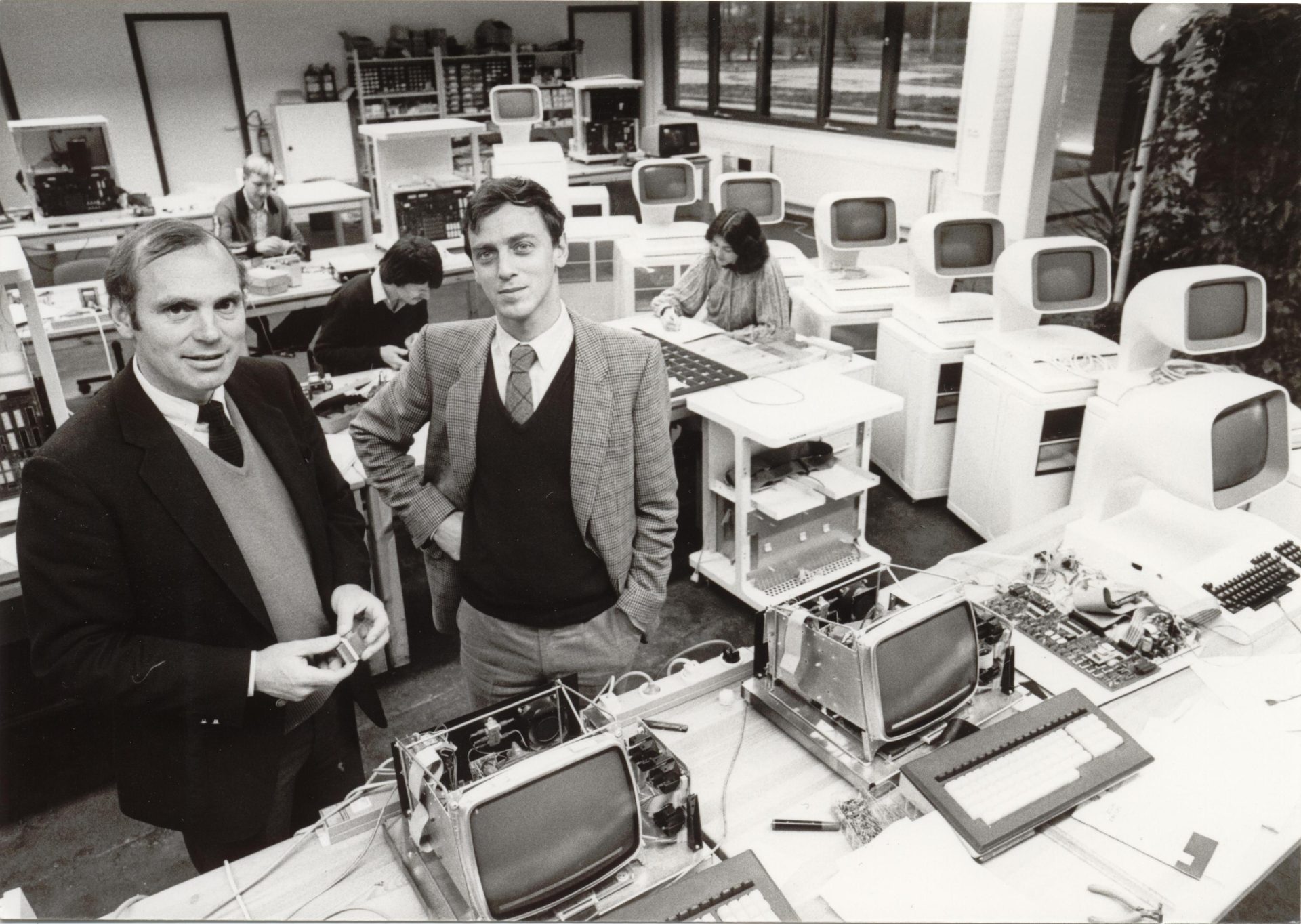
Holborn Computers later moved from Hengelo to a newly built building in Enschede. In this photo you can see the co-founders, Dick Gerdzen on the left of the photo and Hans Polak on the right, in the production area of this new building. In front of them in the photo are Beehive terminals, which were used for the very first Holborn 9120 terminals. Their main focus was to enter the market as quickly as possible and achieve success with their products.
The Holborn computer system was designed to provide multi-user capabilities and also had to be expandable. Additionally, they wanted to be able to add printers to the system. For these reasons, the first Holborn system was given the name “growth computer”. This system consisted of a 9100 system cabinet/server and 9120 terminals, which were actually more advanced versions of the original Beehive terminals.
However, for political reasons, especially to avoid Holborn being accused of stealing knowledge from Holland Signaal, the system had to use a different processor than the Motorola processor that Holland Signaal used. That is why the Zilog Z80 processor was chosen.
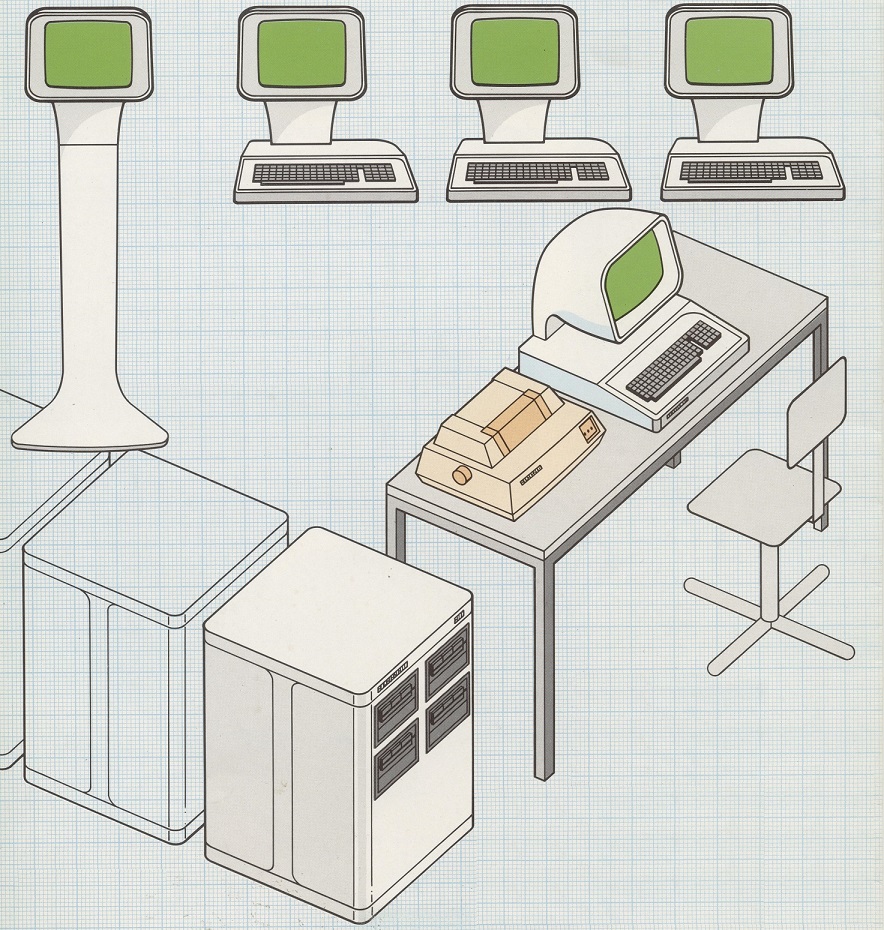
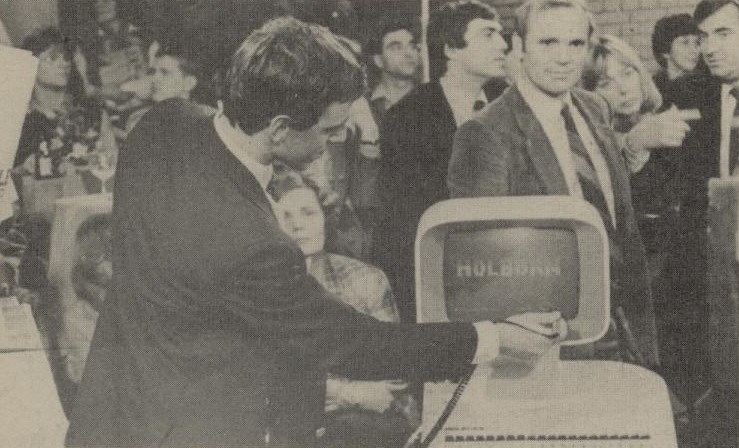
Holborn started to grow and the team expanded. To gain more exposure, the company decided to advertise. They even presented their Dutch product in the television program Brandpunt.
On the left you see Hans Polak in action as he demonstrates the machine and the use of the lightpen, while Dick Gerdzen stands behind the machine. It was an important step in showcasing their Holborn computer system and continuing their growth.
Holborn understood the importance of brand awareness for a company. They invested heavily in trade fairs to show who they were and what they stood for.
From the photo you can clearly see that there was a lot of interest in Holborn and their products at these fairs. It was a smart move to put themselves in the spotlight and thus strengthen their presence and reputation in the market.
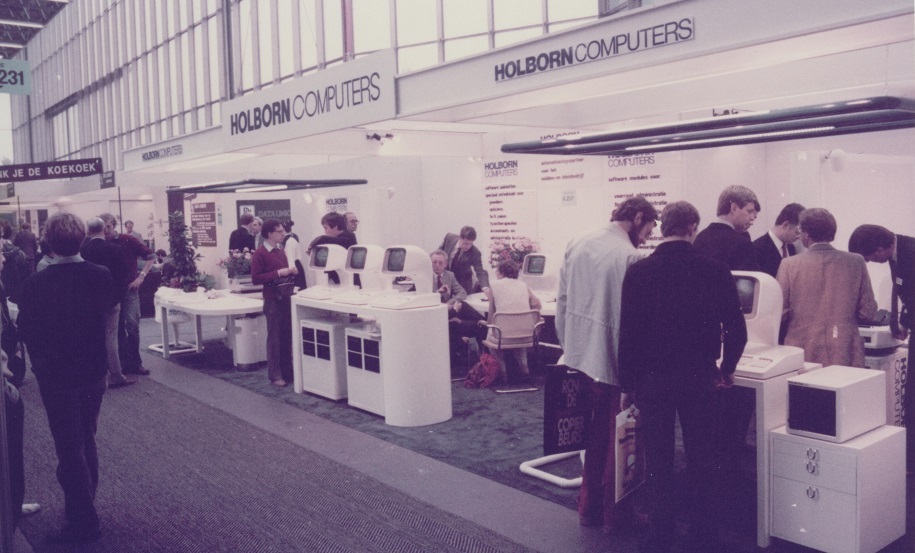
Holborn’s first computer system was the 9100 computer. In order to offer even cheaper machines, they developed the Holborn 7100. This was basically a very simplified version of the 9100. What was interesting is that you could later upgrade the 7100 to a full 9100 system, which kept the growth concept.
Both the 9100 and 7100 computers ran all programs and the Holborn Operating System (HOS) directly from ROM. The data could be stored on 8-inch floppy disks. These machines were tailor-made for specific customers, such as jewellers, opticians and small businesses, and Holborn had several leaflets to show the options.
However, because the software was built into ROM, the machines were not very flexible. At that time, CP/M, a popular operating system, was booming, and Holborn decided to serve this market as well. In addition, there was a demand for even smaller and personal computers that did not cost the top price. This led to the development of the Holborn 6100 computer, which is now on display in the Technisch Museum.
There is some confusion about which software could run on which machines. According to the brochures a 9100 could also run CP/M and a 6100 would also support HOS. However, some former employees claim that not all options mentioned in the brochures were actually possible. In fact, no hard evidence has been found of a 9100 system running CP/M or a 6100 system running HOS.

Here is a somewhat smaller fair (unknown where). There is a Holborn 6100 next to a Xerox 820 II.
These were fairly equal competitors as far as technology was concerned.
But the appearance of the 6100 is immediately striking. And that was exactly Holborn’s intention.
Meanwhile, IBM also began to make its mark on the computer market. The IBM PC may not have been very special technically, but what really set it apart was its open system structure and IBM’s strong marketing.
They even used Charlie Chaplin for their advertising campaigns. IBM already had an established name in the professional market, so confidence in the IBM PC was quickly gained.
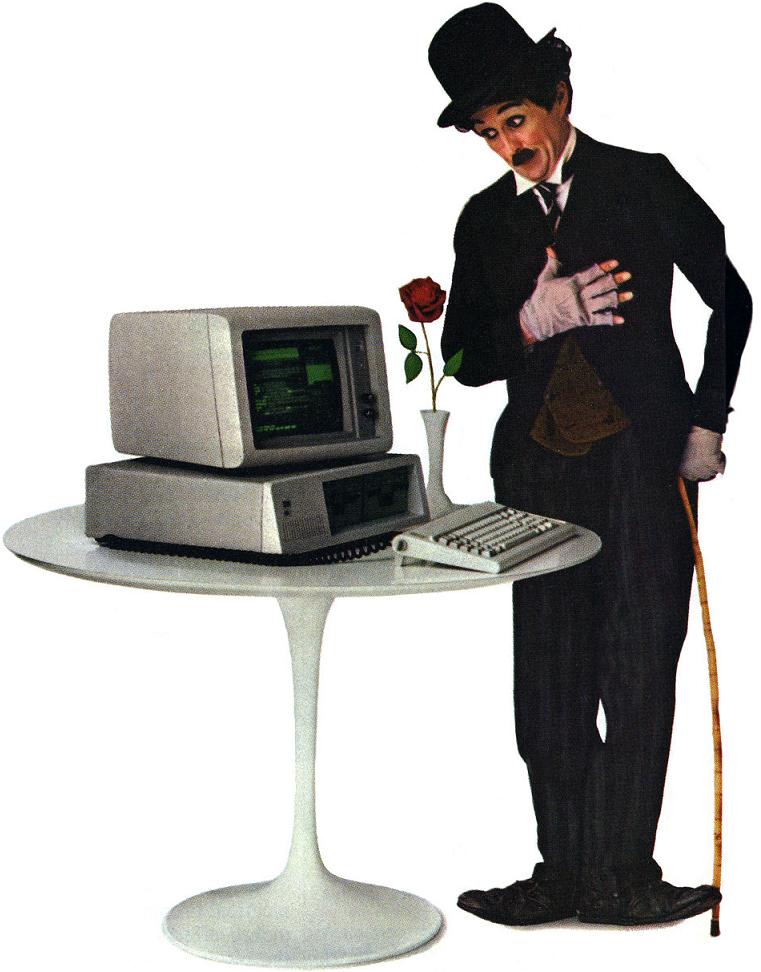
At that time, MS-DOS was not yet as widespread as it would later become. But something had to be done. Economic conditions were not particularly favorable, and Holborn was dependent on external financial support.
A financial plan was drawn up for 1983, but the prospects were bleak. Previous developments were partly financed with subsidies. As noted below, Holborn considered project 9100 a failure.
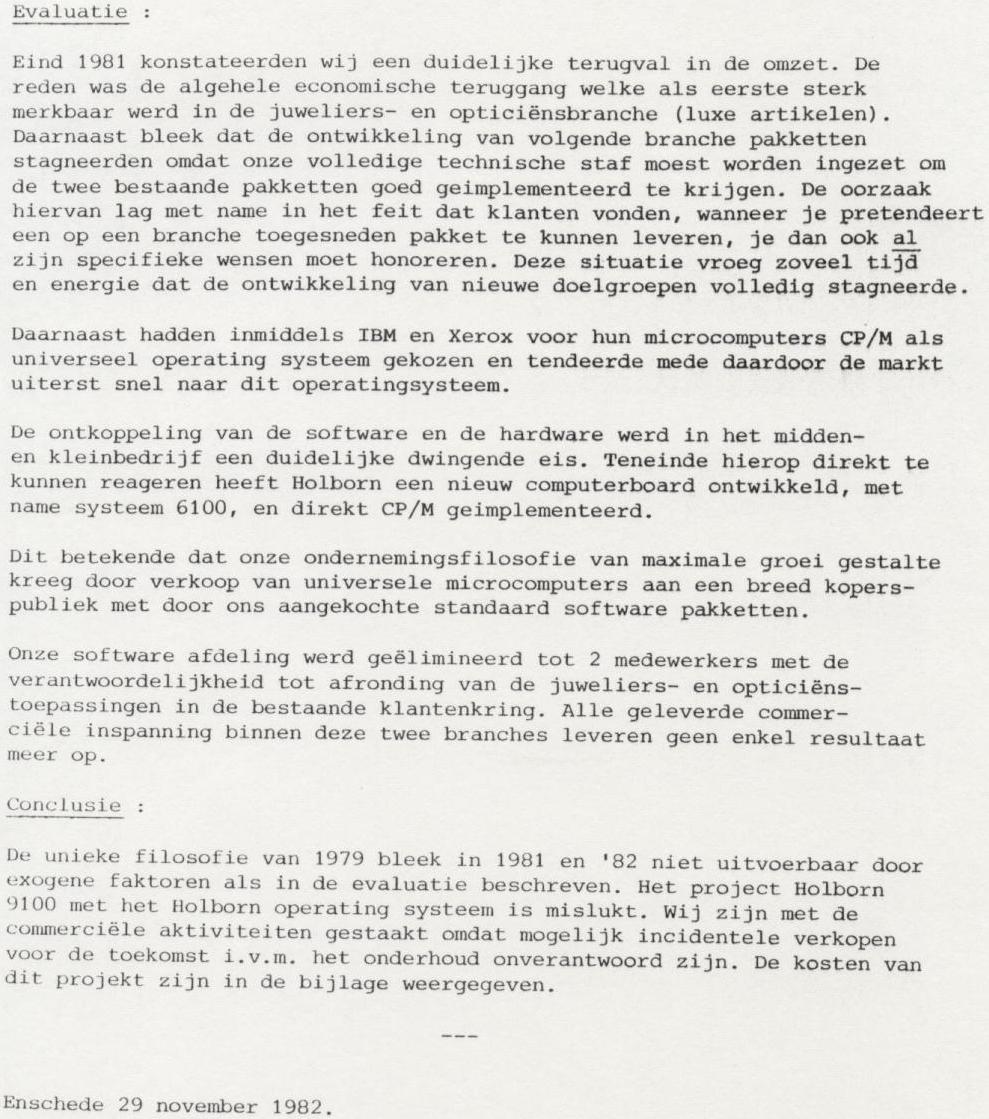
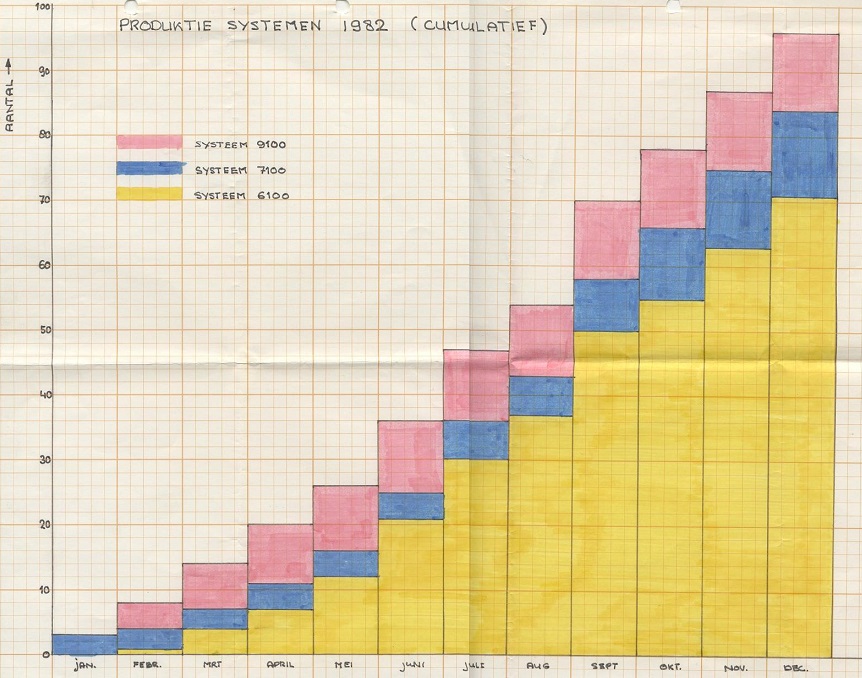
The 1982 sales figures shown above show that the 6100 was the best-selling system at the time, while sales of the 9100 and 7100 had almost come to a standstill.
It was indeed a wise decision to discontinue the entire 9100 concept, as maintaining these systems would become far too expensive. The market had clearly shifted towards the 6100, and Holborn had to adapt to the changing demand to remain financially healthy.
Holbon had to do something! IBM was already using mini floppy disks, and these now had the same 1.2 MB storage size as the 8-inch floppy disks. So the use of 8-inch disks was no longer relevant. In addition, a fixed keyboard no longer suited the modern era.
To respond to this and build on the existing design, the Holborn 6500 was developed. This was a step forward to meet the changing needs of the market and technological developments.
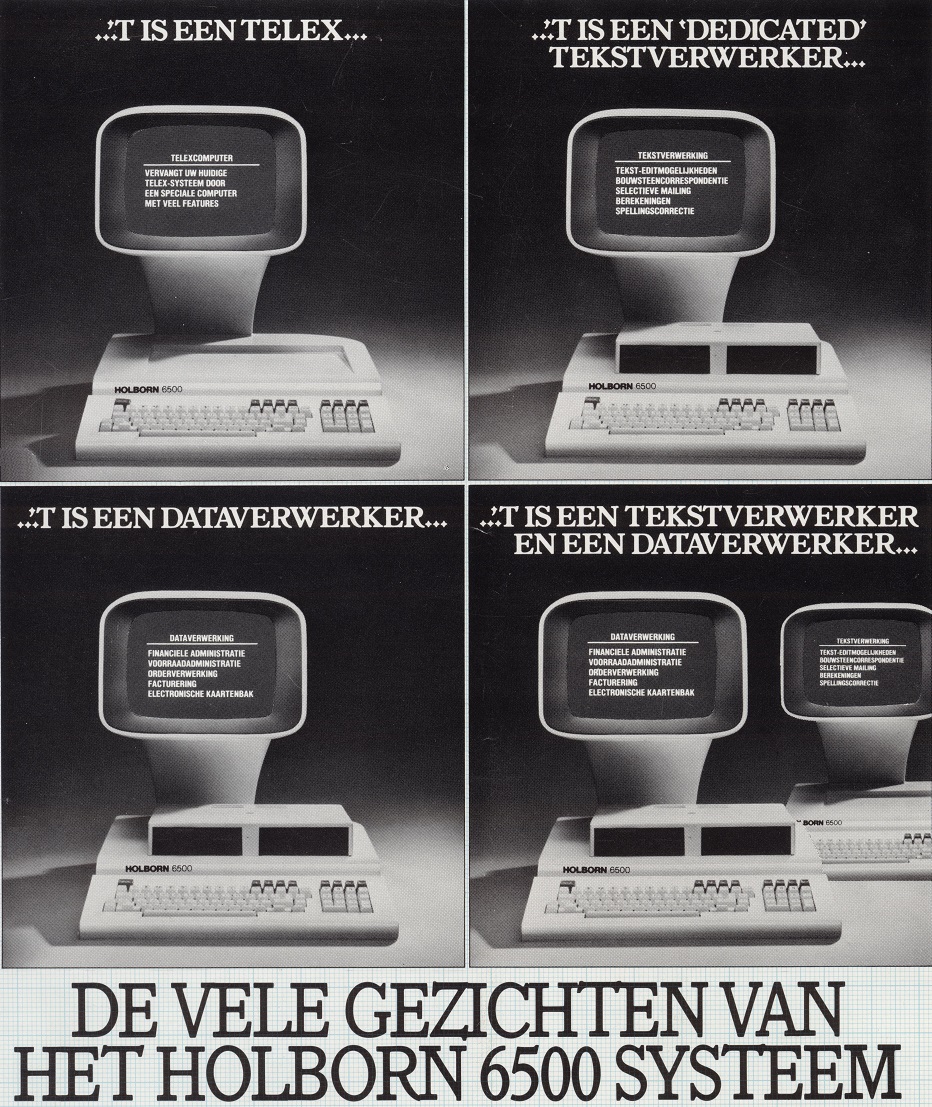
Holborn wanted to make the Holborn 6500 not only an advanced system, but also a technical tour de force. According to the brochure, the internal memory could even be expanded up to 1MB, which was impressive at the time.
However, more and more problems arose. Some people, including Dick Gerdzen, were forced to leave the company at the hands of OOM, in the expectation that the necessary financial resources would be provided. Unfortunately, these financial resources did not come quickly enough, and despite all efforts, Holborn was declared bankrupt on April 27, 1983. It was a sad ending for the company.
After the bankruptcy, Hans Polak founded the Greenock company, which built some of these computers and converted customers’ existing Holborn 6100 systems to 6500 models.
Many thanks to Roland Huisman, technischmuseum.nl, for this information.

